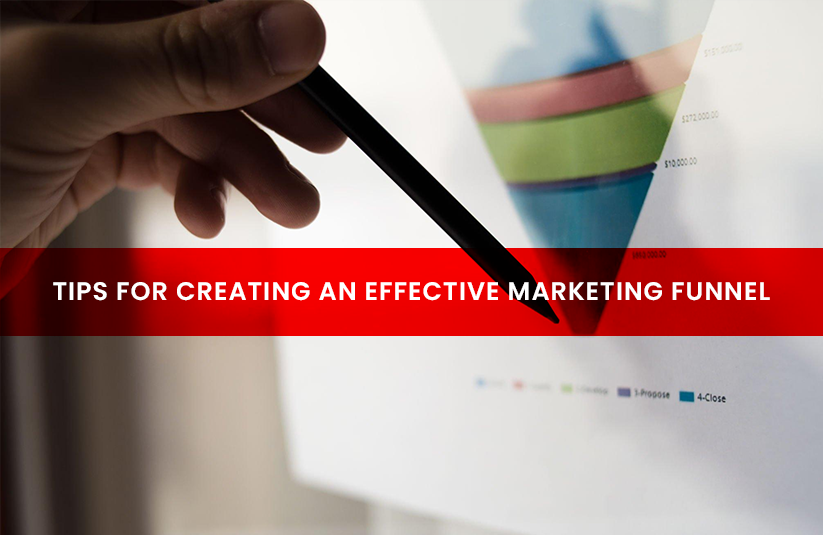Someone wise said, “Good marketing makes the company look smart. Great marketing makes customers look smart.” An effective marketing funnel fills the gap between the customers and the company. But how do you create a perfect marketing funnel to convince the audience to take the lead? For that, here we will provide tips for creating an effective marketing funnel. These funnels engage your user’s customer journey through your product, service, or website.
Before moving on to tips, first, you have to learn about how this marketing funnel is going to engage your customers. Here is how:
It will map how your prospective customers progress through the various stages of the user journey and track your efforts to attract, engage, and convert them through the marketing materials—content marketing, ads, or the website’s landing page. Typically, the marketing funnel converts leads from creating awareness of your product or service to making a purchase decision. The marketing funnel comes with three important stages: awareness, consideration, and decision.
Now let’s see the tips for creating a customer-centric marketing funnel.
Create an Effective Marketing Funnel:
There are several models accessible to create an effective marketing funnel that converts. Let’s delve into some techniques to use in your funnel marketing efforts. Start with the ideal buyer journey.
Identify Your Ideal Customer:
The conversion funnel aims to create an effective buyer’s journey and accumulate your conversion rate. For all that, you should figure out your starting point and end goals for doing this. Simply follow these three steps:
Identify your typical buyer’s journey right now:
Identify your end goal, or what action you want a prospect to take.
Know how to improve your existing buyer’s journey to increase leads into paying customers. Once you identify what your end goal is, it makes it easy to map out your marketing funnel.
Segregate Your Marketing Funnel Strategy in Each Stage:
First, think of your market funnel in three stages: the top of the funnel, the middle of the funnel, and the bottom of the funnel. Each of you has to set a different goal for conversion. For instance,
Top of the Funnel:
Strategies to Increase Traffic. For that, you have to build strong brand awareness. You can use creative or visually engaging content to attract a new audience to your product or service.
Middle of the Funnel:
Let your audience know how you are going to meet their needs. Thus, focus on creating valuable, informative, and expert social media posts or video formats.
Bottom of the Funnel:
Improve the conversion rate by creating a reason for your prospects to sign up or add your product to their cart. You can give free trials, CTAs, and emails to take action.
If you set concrete goals, utilize tools to track your progress and ensure you attain all your objectives. For instance, use Google Analytics to measure your success rate.
Create Content to Generate Awareness:
Once you create hype around your product or company at the first stage of the funnel, consider this: Why should we care about your brand? How does your service solve their problem? Thus, you have to create content to answer these questions.
First, do your competitor research and consider what you can learn from their landing page, customer reviews, blog, and social media posts. Analyze how they cover their potential audience. You can use Semrush or Ubersuggest to know your competitors. Scan their blog posts and find the elements that you can replicate or improve upon. Then monitor their social media channels to see which posts or content get more engagement and are buzz-worthy. Try to emulate them in your posts with your creativity. Now you’ve got the content plan, but you need to create it according to your unique desires.
Encourage Your Users to Take Action:
Now your goal is to convert them into your actual buyers. Your desired action may differ according to your business strategy. Take a look at some examples of business tactics you may want your prospects to take:
- Create a detailed PDF download and provide your prospect with their contact details. Make sure your PDF answers all common customer questions regarding your brand and services.
- Add CTA action to blog posts and social media posts to take action.
- Send actionable emails.
- Customer testimonials.
Conclusion:
These are the things that you should keep in mind when creating an effective marketing funnel. And make sure to eliminate all distractions. The marketing funnel provides vital access to understanding the entire journey of your customers and making the strategy according to them. If you implement these tips for creating an effective marketing funnel correctly, it will assist you in reaching out to your target audience and increasing your conversion rate.
FAQ:
What are the 5 Stages of the Marketing Funnel?
The five stages of the marketing funnel are Awareness, Interest, Desire, Action, and Loyalty.
What is a Good Marketing Funnel?
A good marketing funnel builds the process of making potential customers aware of your brand through advertising. They visit your company’s website or sign up for a newsletter and show interest in your products or services.
What is the Most Important Part of the Marketing Funnel?
A well-defined marketing or sales funnel helps you serve relevant information at the right time across the right marketing channel. It provides a better understanding of what your prospects are thinking, what they know, and what level of interest they have in your brand. Thus, choosing the right marketing channel and strategies is an important part of this sales funnel.












